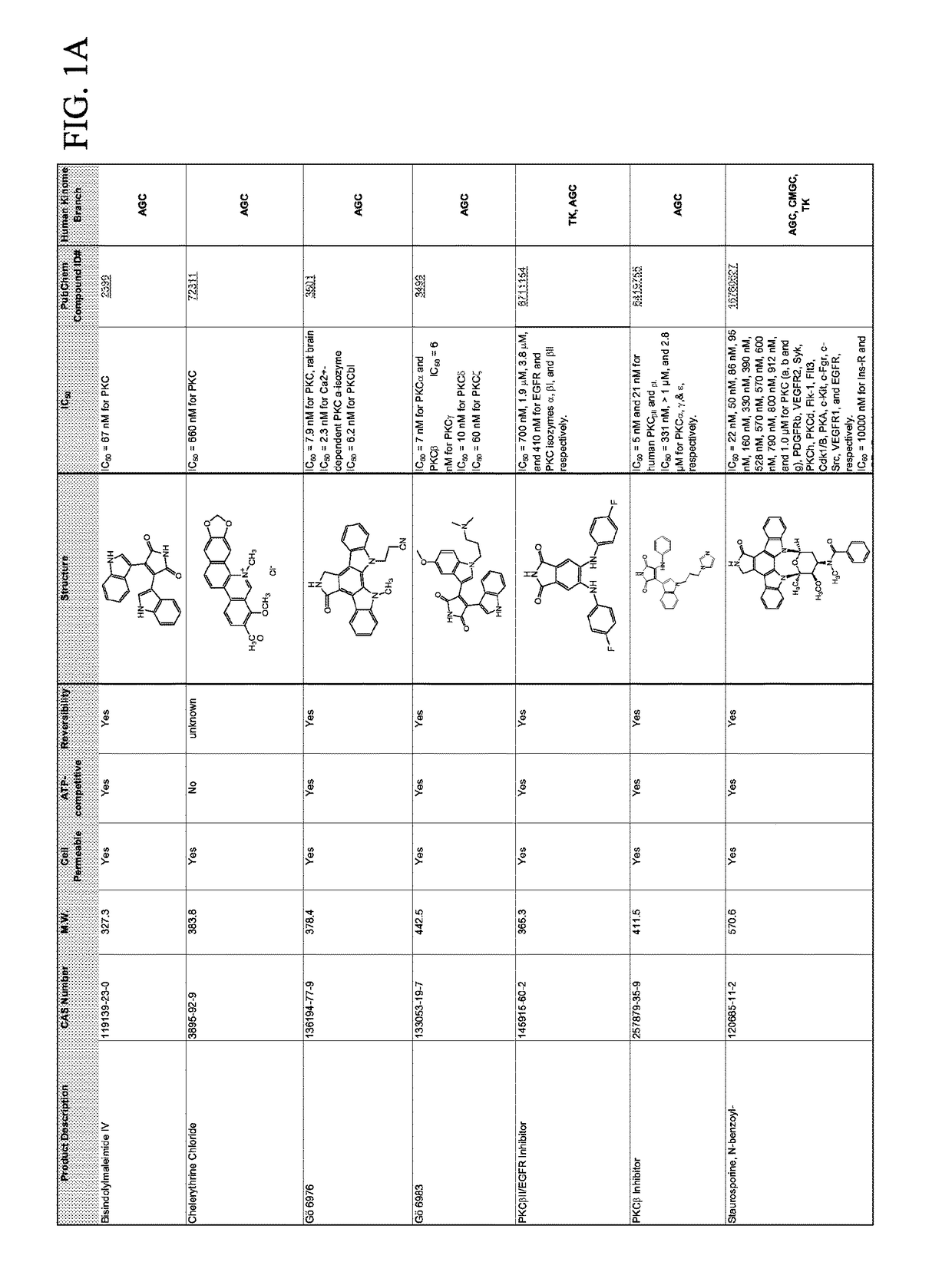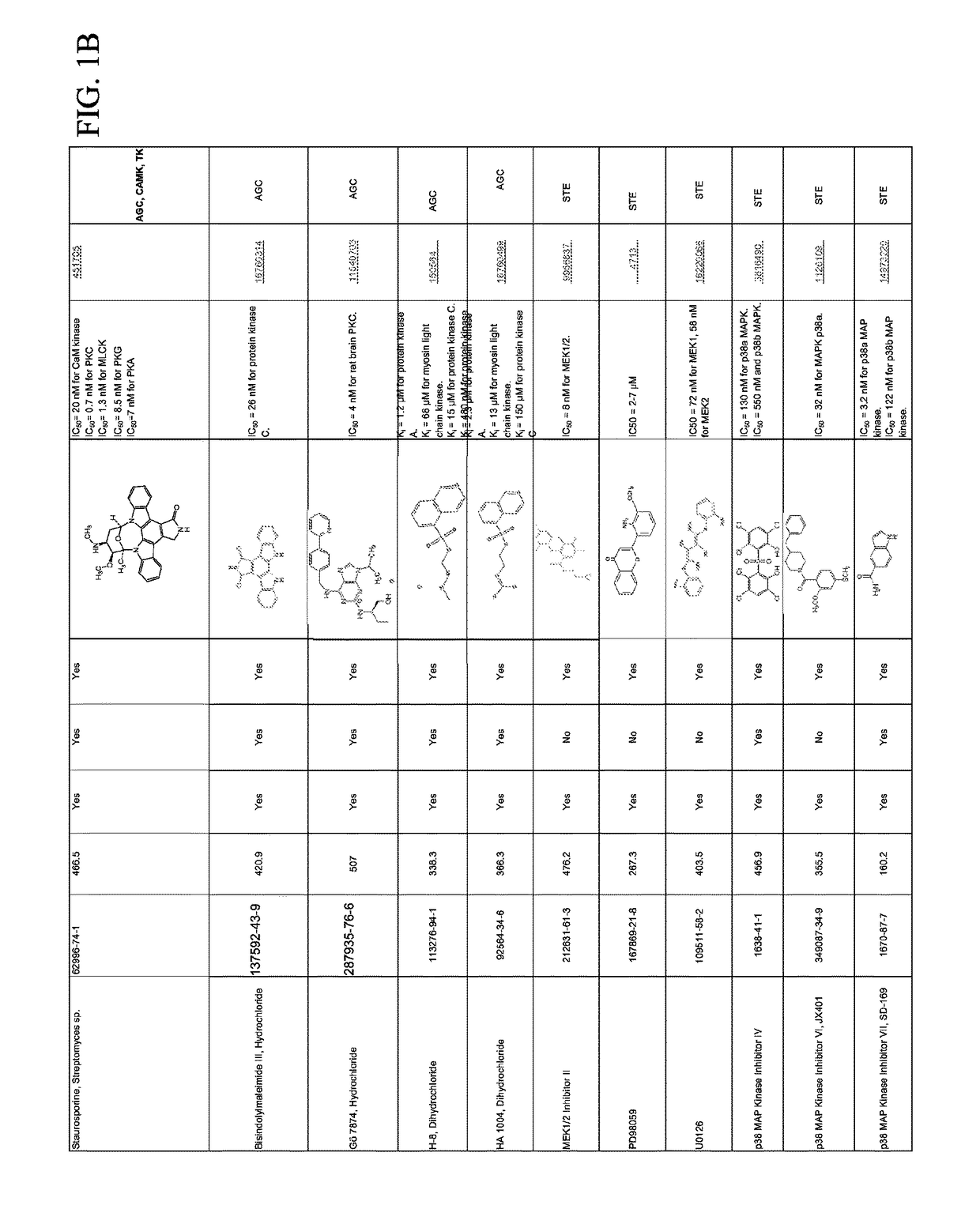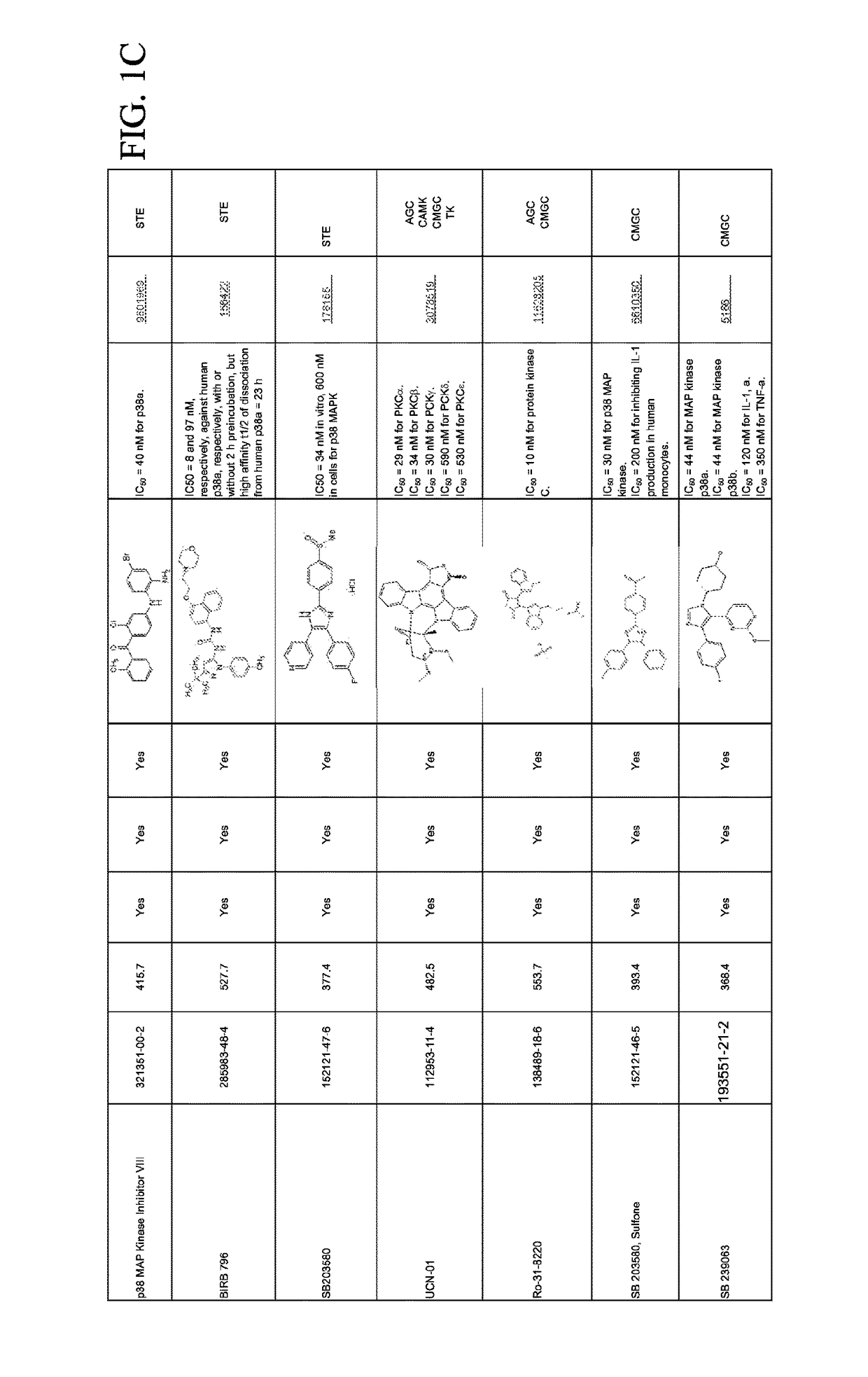Combination therapies for malaria
a combination therapy and malaria technology, applied in the field of conjugated therapies for malaria, can solve the problems of affecting the effectiveness of many of the most common antimalarials, affecting the safety of patients, and increasing the risk of resistance development through poor compliance, so as to reduce the development of parasites
- Summary
- Abstract
- Description
- Claims
- Application Information
AI Technical Summary
Benefits of technology
Problems solved by technology
Method used
Image
Examples
example 1
Compounds for Effects on Cell Viability, Proliferation and Kinase Activity in Mosquito Cells In Vitro and In Vivo
[0065]Testing with immortalized Anopheles cells. Multiple cell lines created from minced mosquito embryos or larvae are available from Anopheles stephensi (ASE, MSQ43) and from Anopheles gambiae (4a3B, SUA). These cells are not derived from specific tissues, but rather were selected because they grew continuously under culture conditions after isolation. In general, these cells are phagocyte-like and immune-responsive, but cellular physiology is more muscle cell-like (Giulivi et al., Biochem J, 415:309-16, 2008). Small molecule inhibitors (SMIs) are analyzed using these cells first to establish concentration ranges that inhibit target protein kinases without toxic effects on mosquito cells.
[0066]Cell death assay. SMIs are diluted over a log-range for toxicity analyses. Assays against mosquito cells are performed in 96 well plates using CytoTox 96® Non-Radioactive Cytotoxi...
example 3
ation of Kinase Inhibitor(s) to Human Patients to Treat Malaria
[0078]This example provides a description of a clinical study among malaria-infected individuals. The clinical and parasitological response (CPR) in test subjects receiving treatment with candidate kinase inhibitor(s) (test formulation) is compared to the CPR of control subjects receiving treatment with a control formulation (placebo or comparator).
[0079]Primary Objective: to compare the proportions of test and control subjects that are free of parasites in the blood at Day 28 post-treatment.
[0080]Secondary Objective(s): to compare the proportions of test and control subjects free of parasites in the blood at Day 7 post-treatment; to compare the time of clearance of fever in test and control subjects; and to compare the time to clearance of parasites in the blood in test and control subjects.
[0081]Tertiary Objective(s); compare the responses to treatment of test and control subjects according to the World Health Organiza...
example 4
ation of Kinase Inhibitor(s) to Human Subjects to Prevent Malaria
[0089]This example provides a description of a clinical study among healthy individuals traveling in malaria-endemic areas, which compares protection from malaria resulting from prophylactic treatment with candidate kinase inhibitor(s) (test formulation) to protection from malaria in control subjects receiving treatment with a control formulation (placebo or comparator).
[0090]Primary Objective: to compare the proportions of test and control subjects free of parasites in the blood at Day 28 post-treatment.
[0091]Secondary Objective(s): to compare the proportions of test and control subjects who have parasitemia in the absence of fever (less than 37.5° C.) at Day 28 post-treatment.
[0092]Normal, Non-infected Subjects. This study is a subject- and observer-blinded, randomized, controlled study of healthy adult and children subjects (ages 6 months to 55 years) at risk of contracting malaria by traveling to an endemic area to...
PUM
| Property | Measurement | Unit |
|---|---|---|
| molecular weight | aaaaa | aaaaa |
| molecular weight | aaaaa | aaaaa |
| molecular weight | aaaaa | aaaaa |
Abstract
Description
Claims
Application Information
 Login to View More
Login to View More - R&D
- Intellectual Property
- Life Sciences
- Materials
- Tech Scout
- Unparalleled Data Quality
- Higher Quality Content
- 60% Fewer Hallucinations
Browse by: Latest US Patents, China's latest patents, Technical Efficacy Thesaurus, Application Domain, Technology Topic, Popular Technical Reports.
© 2025 PatSnap. All rights reserved.Legal|Privacy policy|Modern Slavery Act Transparency Statement|Sitemap|About US| Contact US: help@patsnap.com



